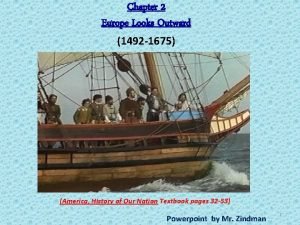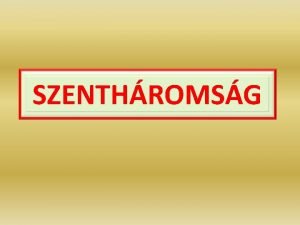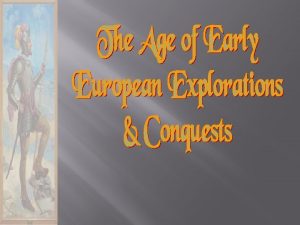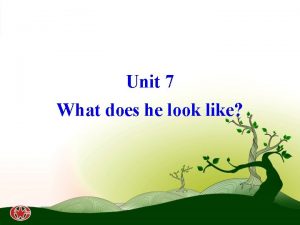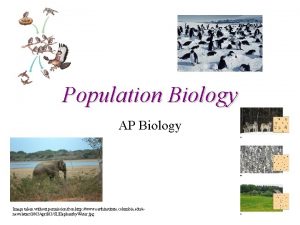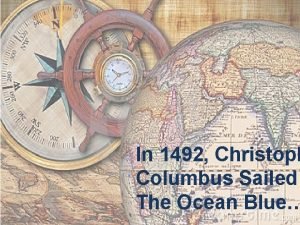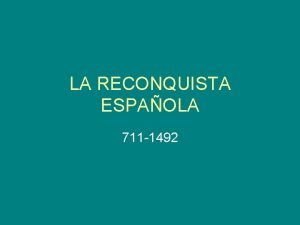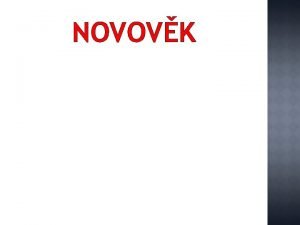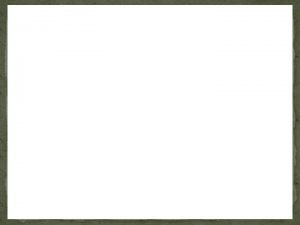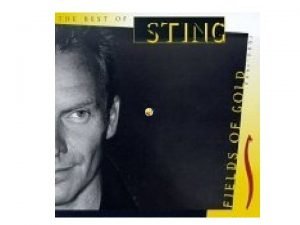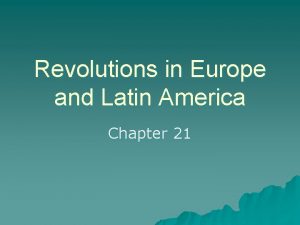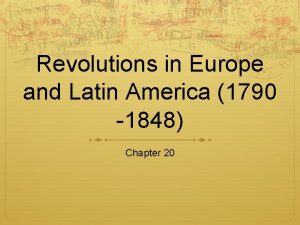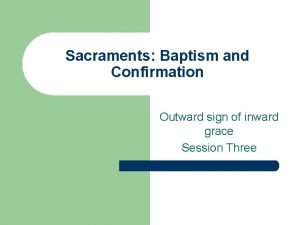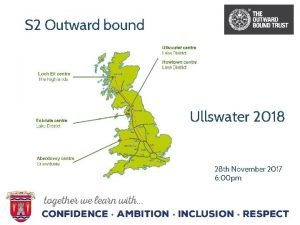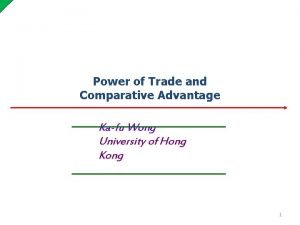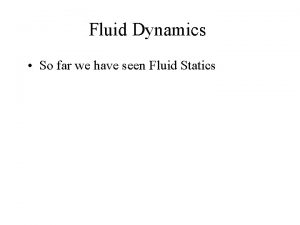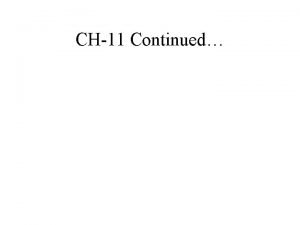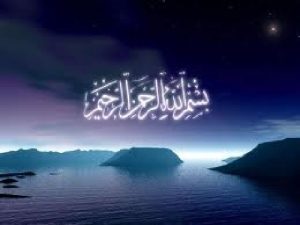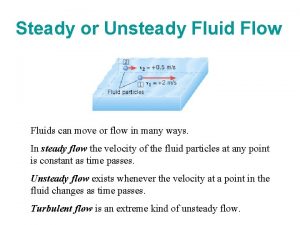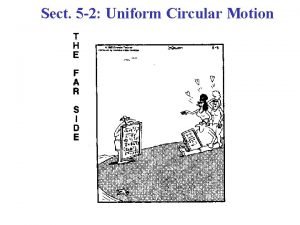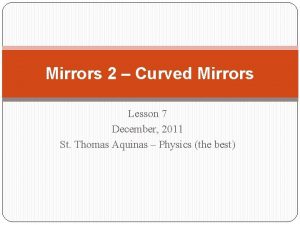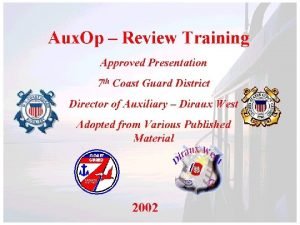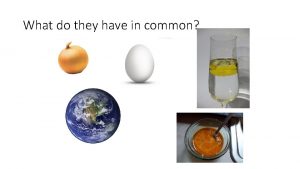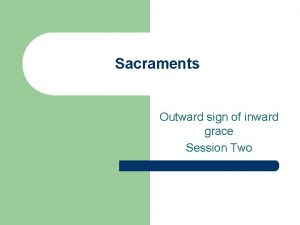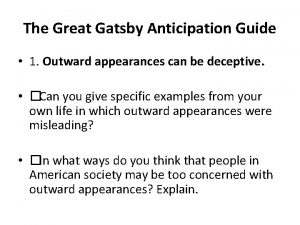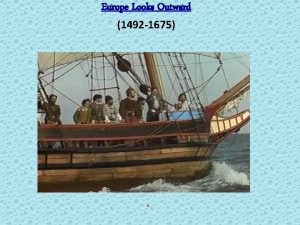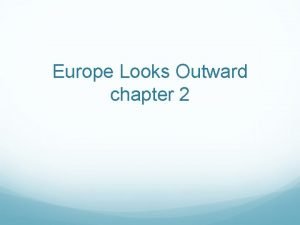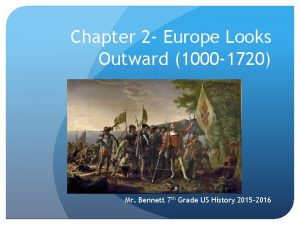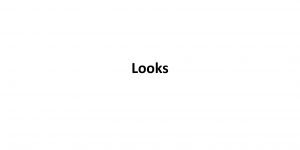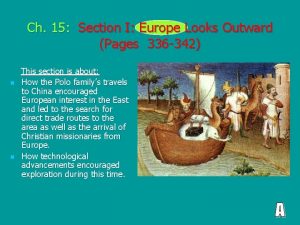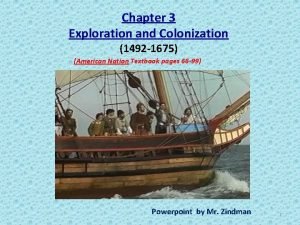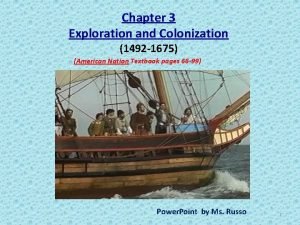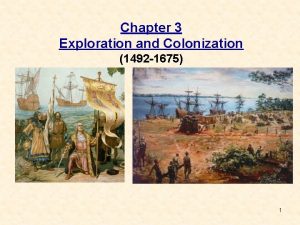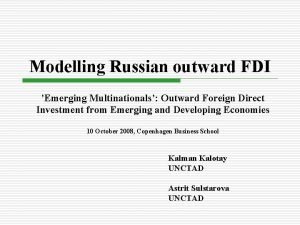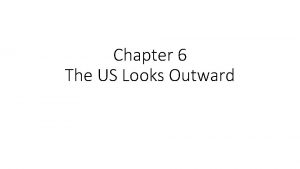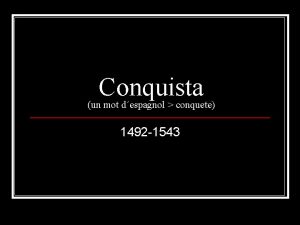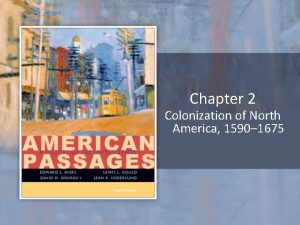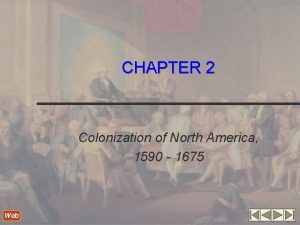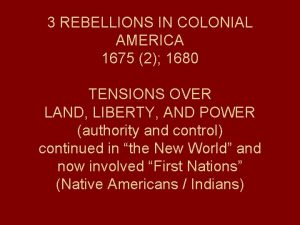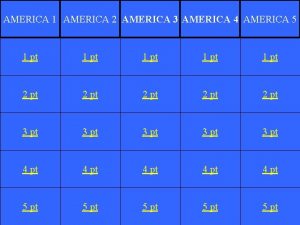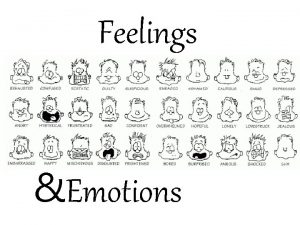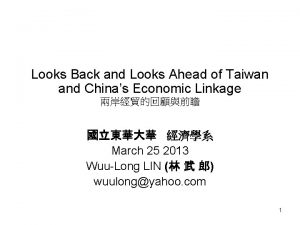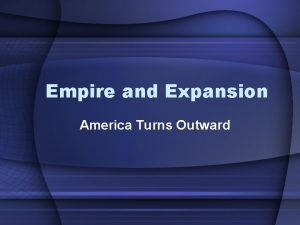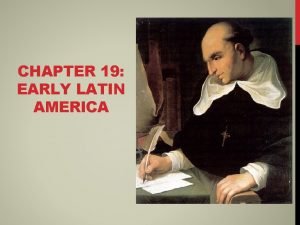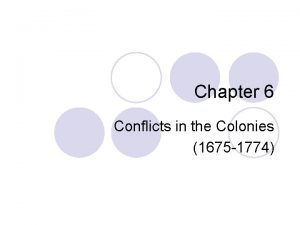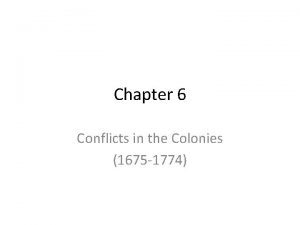Chapter 2 Europe Looks Outward 1492 1675 America



































- Slides: 35

Chapter 2 Europe Looks Outward (1492 -1675) (America, History of Our Nation Textbook pages 32 -53) Powerpoint by Mr. Zindman 1

How did the search for a water route to Asia affect both Europe and the Americas? 1. The Age of Exploration 1 -The Vikings were the earliest people from Europe and Asia sailing to the Americas. Evidence shows that these trips were rare, if they occurred at all. First Visitors From Europe 2 -Lief Erickson, a Viking in 1001, sailed to the northern tip of North America. The Vikings settled in a town they named Vinland which is located in present day Newfoundland. 2

First Visitors From Europe As the Portuguese sailed West toward Asia, the Spanish people wanted to share in the trade and wealth from Asia like the Portuguese people. 3 -In 1492, King Ferdinand Queen Isabella agreed to finance, or pay for a voyage by Christopher Columbus. 4 -On August 1492, Columbus set sail with three vessels and a crew of 90 sailors. The Santa Maria, Nina and the Pinta were his three sailing ships. 3

On October 7 th, Columbus changed his course to follow the birds. On October 12 th, one of the sailors discovered land. This land was not the West Indies it was the island we call the Bahamas. 5 -Columbus established the first Spanish colony in the Americas. Columbus called this is colony Hispaniola 6 -A colony is a territory under the immediate political control of a distant country. He named the Native Americans on the island, “Indos” He thought he reached the West Indies and named the people after the people of the West Indies. Columbus did not realize he was 4 not in the West Indies.

On this island Columbus met the Native American Indians or Tainos. 7 -Columbus soon promised Queen Isabella that in another trip he could convert the Indians to Christianity and enslave them. Upon his visits to the Americas he claimed the land enslaved the Native Americans. 5

Columbus forced the Indians to work the farms and mines. The first voyage of Columbus marked a turning point in history of the Tainos; within one hundred years of his arrival, 8 -they were virtually wiped out by European diseases and slavery. Decorated stones were used to surround the ceremonial plaza served as the field for ball games and holidays. Petro glyphs were engravings on rock surfaces. 6

A Lasting Impact Today we recognize Christopher Columbus as the bold sea captain that discovered America. In truth, the Native Americans discovered America first. For better or worse, the voyages of Columbus became the turning point for the Americas. 9 -A turning point is a moment in history that marks an important change in history. 7

The Continuing Search for Asia In 1510 the Spanish settled in the Caribbean Islands. 10 -Columbus had conquered Puerto Rico, Jamaica and Cuba. 8

In 1510, an adventurer, named Vasco Nunez de Balboa reached the Pacific Ocean. 11 -He claimed the Pacific Ocean for Spain. He explored the Caribbean coast of what today is now Panama. 9

Ferdinand Magellan soon afterwards, in 1519, sailed across the Pacific Ocean. He was looking for a strait, a narrow passage that connected two bodies of water. 12 -Magellan and his followers discovered the first all water route to Asia. For the first time Europeans became aware of the true size of the world. 10

13 -In 1522, one ship and 18 sailors circumnavigated, or sailed completely around the world. Only one ship from Magellan’s fleet returned home to Spain in 1522. The other ships were lost in a battle with Filipinos. In all, Magellan was the first European to circumnavigate the globe. 11

The Columbian Exchange The encounter between the people of the Eastern and Western hemispheres sparked. 14 -a global exchange of goods and ideas. Because it started with the voyages of Columbus, this was known as the Columbian Exchange 12

How did Spain establish an empire in the Americas? 2. Spain's Empire in the Americas Spanish Conquistadors 15 -In their search for glory and gold, the conquistadors, or conquerors, marched into the Americas. They came into the America to get rich. Spanish colonists had created a great new empire in the Americas. 16 -The conquistadors caused the Aztecs, Native Americans and the Incas to suffer in their own cities. 13 They enslaved the people of these cultures.

Cortes and Pizarro Cortez In 1519, the Aztec people spotted sailors in ships on the Gulf of Mexico. They reported this to their emperor, Montezuma. The emperor thought that the Spanish sailors were sent to them from their God. The Spanish sailors wanted the Aztec gold. 17 -The Spanish led by Herando Cortes defeated the Aztecs and destroyed their city. They took the riches of the Aztecs. 14

Why the Spanish were Victorious 18 -A few years later, Francisco Pizzaro, a conquistador, did the same thing and conquered the Incas. He captured and executed the Incan emperor, Atahuallpa. 19 -The Aztec and Incas were easily defeated by the Spanish because they did not have guns, swords, cannons and armor. The Aztec and Inca arrows were no match for the war technology of the Spanish. 15

Spanish Explorers in North America 20 -In 1513 Juan Ponce de Leon traveled and discovered the land we call Florida today. 16

21 -In 1539 Herando De Soto discovered the waters of the Mississippi River. 17

In 1540 Francisco Coronado led an expedition into in search of the famous “seven cities of gold. ” This area we know today as the known as the Grand Canyon. 18

Colonizing Spanish America After the Spanish explorers made their discoveries they set up settlements in the Americas. A code called the Law of the Indies permitted three types of settlements. 22 -Under the Law of the Indies the Spanish set up pueblos or small towns, for farming and trade. They called their settlement New Spain. 23 -They also set up forts made of high adobe brick walls. These forts were called Presidios. The soldiers lived in the forts. 19

Lastly the laws , they set up religious settlements, run by Catholic priests, called missions. They set up missions to convert the Native Americans to Christianity. 20

Society in New Spain A Class System The people in the Spanish Colonies were divided into four social classes. A social class is when we group people according to how much money they have. We group them from highest income to lowest income. 25 -Peninsulares- These people were the rulers of the colonies. They held high government jobs in New Spain. 26 -Creoles- These people were the wealthy educated Spanish people. 27 -Mestizos- These people were from a mixed Spanish/Indian background. They were the farmers. They worked on land owned by the Creoles. 28 -Indians- These people were the poorest people. They lived in poverty for hundreds of years. Peninsulares Creoles Mestizos Indians wealthier 21

Native American and African Workers African American slaves were brought to the Americas to work on the farms to replace the Native American Indians that were dying of diseases. They worked as slaves just as the Native American Indians did on plantations. 29 -A plantation was a large estate farmed by many workers. 22

The African Slave Trade 23

Hard Labor Mines in Mexico, Peru, and other parts of the Americas made Spain rich. Treasure ships carried these treasures across the Atlantic Ocean to Spain. Native Americans worked as slaves to the Spanish until they died in the mines or died from disease brought over from Europe. Another source of free labor was soon found in the Northwest Passage. The demand for African labor began when the Indians died. Enslaved Africans were forced to work on plantations. A plantation was a large estate farmed by many workers. 24

Asia Continues to Beckon Throughout the 1500's, European nations looked for a shortcut to get to the riches of Asia. They searched for 30 -a northwest passage, or a sea route from the Atlantic to the Pacific that passed through North America. 25

Northern Voyages 31 -In 1497, John Cabot tried to search for the Northwest Passage and discovered the land we call today Newfoundland. 26

32 -In 1524, Giovanni Verrazzano searched for the northwest passage and discovered the land that we call the Carolina's today. 27

33 -In 1607 -1608, Henry Hudson sailed and discovered the New York Harbor. 28

What impact did the establishment of a French and Dutch colonies in North America have on the native Americans? 4. France and the Netherlands in North America The French began to settle in the colonies in the early 1600’s. In the 1530's, 34 -Jacques Cartier sailed up the St. Lawrence River and discovered the land we call Canada today. 29

New France 35 -Samuel Champlain founded Port Royal, the first permanent French settlement in North America in 1605. The French people came to the Americas. French people that lived and worked in the woods became known as, couriers de bois. They could not build an empire of gold like the Spanish people so they brought items to trade with the Native Americans. In return, the French took home beaver skins. These furs sold for high prices in Europe. Catholic missionaries often traveled with fur traders. A missionary is a person who goes into another land to convert people 30 to their religion.

Impact on Native Americans Native American cultures influenced French life. The French adopted may Indian traditions such as ponchos and moccasins. Indians used Adobe bricks were used to build churches and libraries. The French and Native Americans created an alliance. 36 -An alliance is an agreement between parties that benefits them both. Spanish people needed workers to work their farms, mines, and ranches. They created a system of mercantilism 37 -Mercantilism stated that the colonies existed to make the home country wealthy and powerful. They did not work out an alliance with the Native Americans. 31

Religious and Political Rivalries There were many religious rivalries between Catholics and Protestants. 38 -A man named Martin Luther challenged the teachings of the Catholic Church and the power of the Pope. Luther believed that people can achieve eternal life only by having faith in God 39 -Luther’s movement was called the Protestant Reformation. His followers caused a split in the church. These people later became Protestants. 32

New Netherland The Dutch also hoped to profit in the America like the Europeans. In 1626, Peter Minuit led a group of settlers to the Hudson River. 40 -There he bought Manhattan Island from local Indians. Minuit called his settlement, New Amsterdam. Other colonies settled farther up the Hudson River. The entire colony was known as New Netherland. . 33

41 -New Amsterdam is now it is called New York The Dutch and the French made an alliance with the Native Americans. An agreement to aid and protect one another The Dutch brought many of their customs such as ice skating and Christmas. 42 -The Dutch also brought black slaves to build their colonies from Africa. 34

35
 Chapter 2 europe looks outward
Chapter 2 europe looks outward Jóban rosszban 1675
Jóban rosszban 1675 World map in 1492
World map in 1492 Asia africa song
Asia africa song What does he look like
What does he look like What does he look like
What does he look like Density dependent factors
Density dependent factors Amerigo vespucci time line
Amerigo vespucci time line 1492-711
1492-711 476-1492
476-1492 Co se stalo 1492
Co se stalo 1492 Family and government of west africa in 1492
Family and government of west africa in 1492 The columbian exchange facts
The columbian exchange facts In europe and america sting
In europe and america sting Revolutions in europe and latin america section 2 quiz
Revolutions in europe and latin america section 2 quiz America africa and europe before 1500
America africa and europe before 1500 Revolutions in europe and latin america
Revolutions in europe and latin america America america you mean the world to me
America america you mean the world to me Repetition in let america be america again
Repetition in let america be america again Why is it called latin america
Why is it called latin america Performance e body art
Performance e body art Baptism outward sign inward grace
Baptism outward sign inward grace Outward bound ullswater
Outward bound ullswater Kafu wong
Kafu wong Mirror that curves outward
Mirror that curves outward The tarpaulin cover of a moving truck bulges outward
The tarpaulin cover of a moving truck bulges outward The tarpaulin cover of a moving truck bulges outward
The tarpaulin cover of a moving truck bulges outward Bench terraces sloping inward
Bench terraces sloping inward The tarpaulin cover of a moving truck bulges outward
The tarpaulin cover of a moving truck bulges outward Centripetal force inward or outward
Centripetal force inward or outward Mirror that curves outward and used in convenience store
Mirror that curves outward and used in convenience store Stops the bow from moving outward from the dock
Stops the bow from moving outward from the dock Mysterion sacrament
Mysterion sacrament Outward
Outward Outward sign of inward grace
Outward sign of inward grace Wealth can breed carelessness examples
Wealth can breed carelessness examples
